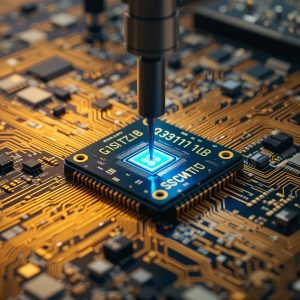Ball Grid Array (BGA) soldering is a critical process in modern electronics repair and manufacturing, especially for devices like smartphones, laptops, gaming consoles, and other compact electronics. Choosing the right BGA soldering machine can significantly impact the success and efficiency of your work. Whether you’re a repair technician, electronics hobbyist, or a small-scale production manager, here’s a complete guide to help you choose the best BGA soldering station.
What Is a BGA Soldering Machine?
A BGA soldering machine is a specialized rework station designed to handle components with Ball Grid Array packaging. These components have solder balls underneath instead of traditional pins, making them challenging to solder or desolder without the right equipment.
These machines use precise temperature control, infrared or hot air heating, and alignment systems to remove, place, and reflow BGA chips without damaging the PCB or nearby components.
Key Features to Look For in a BGA Soldering Station
1. Heating System Type
There are two main types:
- Infrared (IR): Uses infrared light to heat the chip and board. Ideal for boards that may be sensitive to airflow.
- Hot Air: Blows heated air over the BGA. More common and generally easier to control.
- Hybrid (IR + Hot Air): Combines the advantages of both systems for optimal flexibility.
What to look for: A hybrid system offers the most versatility, but even a well-designed hot air system can deliver excellent results.
2. Temperature Control and Profiles
Precision is crucial. Look for:
- Multiple programmable temperature zones
- PID-controlled heating elements
- Custom reflow profiles (preheat, soak, reflow, cool-down stages)
Why it matters: Accurate thermal control helps prevent component damage and ensures consistent solder joints.
3. Alignment System
Proper chip placement is essential. Higher-end stations offer:
- Optical alignment systems (with camera-assisted positioning)
- Microscopic or laser-guided placement
- Manual or automatic adjustment
Pro tip: For high-density or fine-pitch BGAs, camera alignment is a must-have.
4. Board and Chip Holders
Stable, adjustable fixtures are vital. Make sure the station includes:
- A PCB holder with adjustable clamps
- A secure chip placement mechanism
- Movable X/Y/Z-axis controls
Why it’s important: Stability during soldering and de-soldering prevents misalignment or component damage.
5. Software and Interface
Modern BGA rework stations often come with touchscreen interfaces and PC connectivity.
Look for:
- Easy-to-use UI
- Customizable profiles
- Data logging and real-time monitoring
6. Size and Power Requirements
If you’re working in a small lab or repair shop:
- Compact design is a bonus
- Ensure it fits your bench space and electrical outlet specs
Pros and Cons of BGA Soldering Stations
✅ Pros:
- High Precision: Makes BGA rework feasible without damaging the board
- Efficiency: Speeds up complex repair or prototyping tasks
- Consistency: Reusable profiles lead to repeatable results
- Versatility: Can be used for a wide variety of SMT components
❌ Cons:
- Cost: High-quality machines can be expensive (anywhere from $500 to $10,000+)
- Learning Curve: Requires training to use effectively
- Maintenance: Needs regular calibration and cleaning
- Space: Larger models can take up significant workspace
Recommended Brands and Models (2025)
Note: Always check current reviews and specs before purchasing.
- Quick 861DW: Great entry-level hot air station with strong airflow control
- LY IR-Pro Series (e.g., LY IR-Pro SC): Popular in mid-tier markets with hybrid heating
- WDS-620/650 Series: Used in professional repair shops for iPhones and gaming consoles
- Scotle HR Series: Good budget option for hobbyists
- Puhui T-890 Series: Offers solid performance for the price
Final Tips Before You Buy
- Define Your Needs: Are you doing occasional repairs or regular production work?
- Check Compatibility: Make sure it supports the size and type of components you work with.
- Budget Wisely: Don’t overspend on features you won’t use but avoid underpowered units that lead to poor results.
- Look for Support: Check if the manufacturer offers tutorials, spare parts, or technical support.
Conclusion
Choosing the best BGA soldering machine is all about balancing precision, functionality, and budget. The right station will not only make your work easier but also open up more repair or manufacturing opportunities. Do your research, try out different models if you can, and always prioritize machines that offer reliable temperature control and precision handling.



